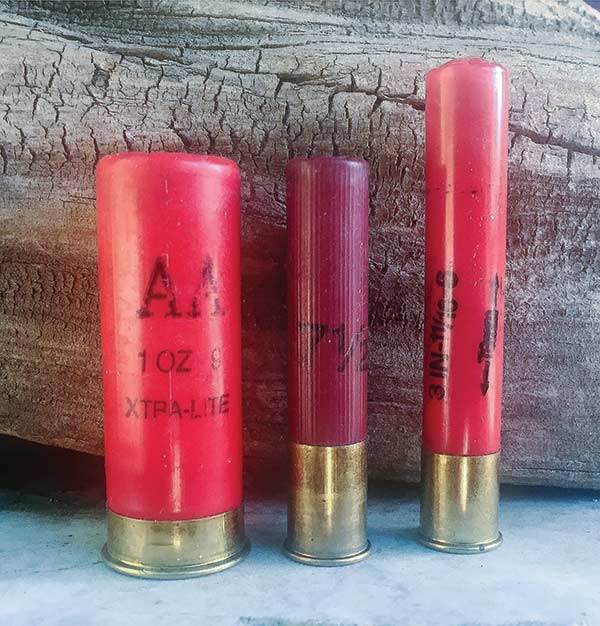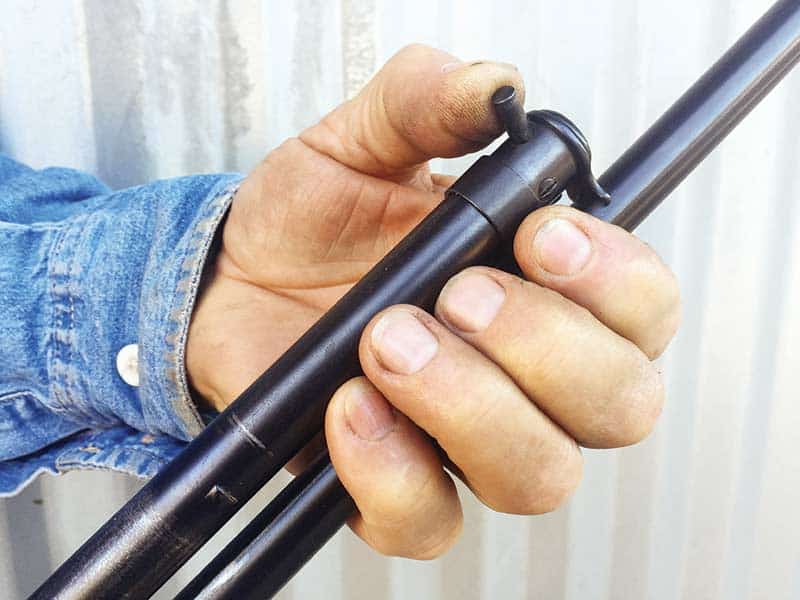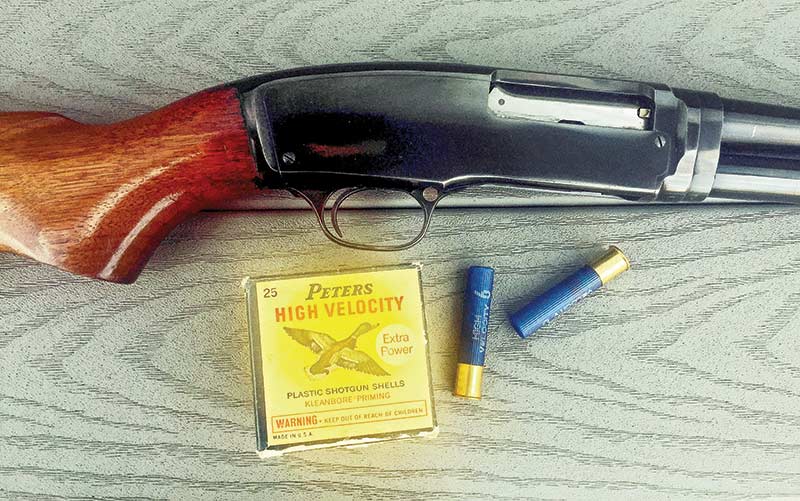Winchester Model 42
A petite and perfect .410 pump gun
I’ve always felt starting a novice shotgunner with a .410 borders on child abuse. A .410 should properly be viewed as the reward for finally having learned a thing or two about wingshooting over the course of many seasons.
Getting hooked on a .410 is something that generally happens once you’re fairly well along in years, at least in my case. I’d been a “12 or 20 guy” all my life but once I began to show symptoms of Acute .410 Infatuation, concerned friends attempted an intervention, advising me to go to a 28 instead. “It’s a real gun,” they told me. “Anyway, what do you want with a bore-size measured in caliber instead of gauge?”
My smart-ass answer was something along these lines: “If you’re gonna be a smallbore showoff, why not go all the way?” The upshot was for years I used a .410 Browning BPS. It was a wonderful gun, based on the bottom-ejecting Ithaca M37 pattern, which made it kind of a pain in the butt to single load at skeet but it shot wonderfully. It was a great little dove gun, not so great on tougher, wild-flushing California Valley quail, but still a peach.
The Holy Grail of .410s
Having been hanging out at my local skeet field, I often got to shoot with a tight-knit group of very serious retired Japanese guys who used Winchester 42s exclusively, as well as the short-lived Browning/Miroku reissues from the early ’90s now costing darn near as much as an original.
I became horrendously envious of those wand-like, properly scaled M42s that were easily a pound lighter than my BPS. To be honest, up until then most other .410s I’d seen at the club had been outrageously pricey O/Us — either dedicated .410 imports or less exorbitant Browning Citori 12-gauges with Briley tubes.
My “stopgap” solution for a seriously scaled-down .410 was a nice old Stevens Model 940D single-shot. As much fun as I had with it, I realized if I wanted to shoot doubles with something truly small-framed yet capable of repeat shots, I was going to have to get serious about finding a Model 42.
At Last
After searching for years for a Model 42 I could afford, I managed to luck into a better specimen than I deserved for a few bucks less than the price of a new Benelli M2 Field autoloader. With a serial number indicating a 1955 date of manufacture, mine — a 26″ barreled Standard Grade with a Modified choke — was a product of the home stretch of the model’s 30-year production run (1933–1963). Other grades included Deluxe, Skeet, Pigeon and Trap. I’ve handled a Deluxe, which was a vent-ribbed thing of walnut and steel beauty but I handed it back quickly, not wanting to spoil myself for my Standard Grade.
Besides its first-glance resemblance to Winchester’s equally classic Model 61 pump-action .22, part of my M42’s charm is its fixed choke. Although I’d only used the full choke tube on my Browning BPS, I’ve noticed darn little practical difference between M and F when you’re dealing with 2.5″ .410 target loads. We’re talking half an ounce of No. 8 or 9 shot and the longest poke you’re going to be presented with at skeet yardages is 21 yards maximum anyway.
I really enjoyed being able to dump a full box of Winchester AAs into my pants pocket and barely notice they were there! No fancy shell vest required, but you may want to think about hanging on to those empty hulls!. The .410 may classify as a smallbore but there’s nothing small about the per-box price tag.
It took a while to settle in with my Model 42, but given the parameters of skeet — or a dove opener when the birds aren’t too spooky — if I’m swinging and pointing the gun like I should, the .410 isn’t all that much of a handicap.
The problem with any ultralight .410 lies in simply not “overmuscling” it, swing-wise. This isn’t to say you’re going to over-lead things. You’re more likely to compensate for the light weight by consciously slowing things down to the point where you’ll commit the usual stop-and-go swing that results in shooting behind the bird. Guys using Briley .410 tubes in a full-size O/U are less likely to fall prey to this. There is a definite learning curve but it’s more than compensated for by the joys of a smoking stuff with a little bitty gun.
And, on those inevitable occasions when I hit a slump, I pick up a 20 or 12 for a couple of sessions until my confidence comes back. If Winchester — or Browning — ever sees fit to reintroduce this little gem in any grade, I’ll be first in line for it. But for now, this one will do nicely.







